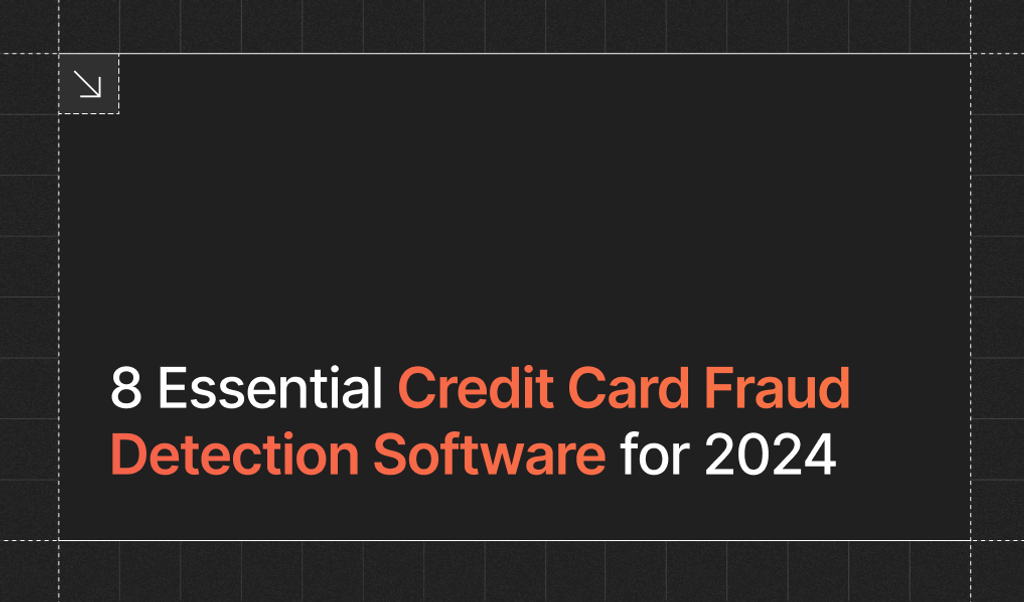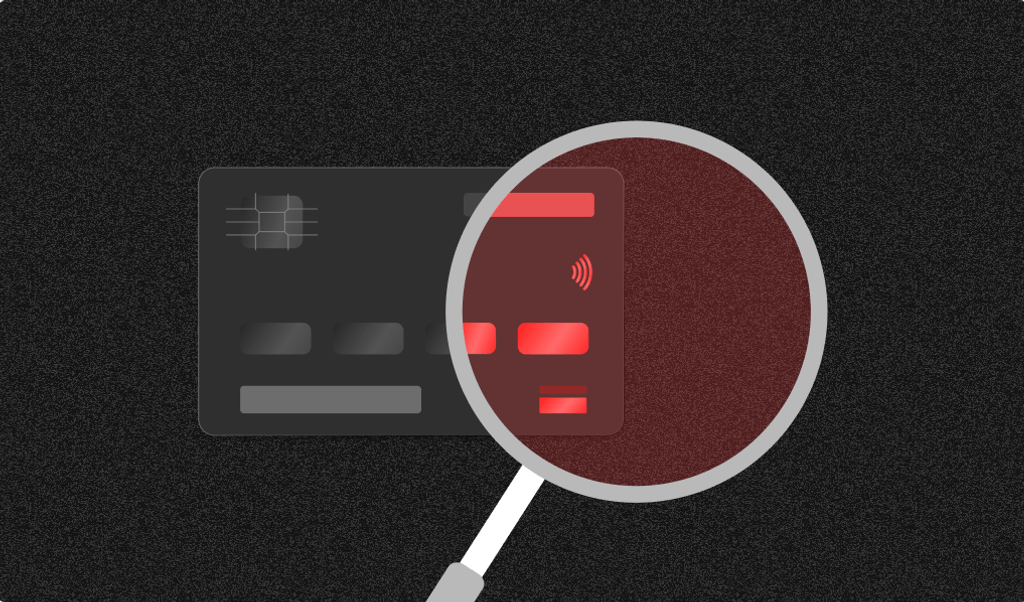
Summarize this article with
Why bank fraud is still a major threat in 2025
Every time a bank launches a new mobile app or instant payment feature, it expands the attack surface for fraudsters — offering new opportunities for exploitation. As transaction volumes grow and customer touchpoints multiply, so do the chances for malicious actors to find and exploit vulnerabilities.
Financial institutions are stuck in a tricky spot. Customers want everything to be instant and seamless. But if a bank lets its guard down, losses go far beyond missing funds — think regulatory fines, reputation damage, and lost customers. In 2025, fraud detection requires a delicate balance between providing enough security to protect customer accounts while still offering a smooth login process for legitimate account holders.
The types of bank fraud that pose the greatest risk
Fraudsters aren’t necessarily finding new ways to commit fraud; instead, they’re refining their age-old tactics using new technology like generative AI so they’re more effective. Here are the main threats that keep fraud teams up at night.
Credit card fraud
Stolen card numbers, cloned cards, unauthorized charges. Fraudsters can buy card data on shady forums or trick customers to reveal card information with phishing, then test the waters with small purchases before going big. These transactions are tricky to detect because they often look completely normal — until they don’t.
Account takeover attacks
Account takeover (ATO) is every bank’s worst-case scenario. Criminals get login credentials through phishing, data breaches, or credential stuffing (where they try combinations of stolen usernames and passwords until they find one that works). Once in, they drain accounts, change contact info, or start spending. Today’s fraudsters are also patient; they’ll mimic real user behavior for weeks before making a move, making them tough to spot.
New account fraud
New account fraud is when someone opens a bank account using stolen or synthetic identities (where fraudsters blend real and fake data to pass basic ID checks) to get sign-up bonuses, open credit lines, or launder money. Once the account is open, they cash out and vanish.
Payment and wire transfer fraud
Payment fraud covers everything from unauthorized card charges to intercepted wire transfers. Fraudsters might hack business accounts to reroute payments or exploit weaknesses in real-time payment systems — where transactions move so fast, there’s barely time for fraud teams to react. Many times, once the money’s gone, recovery is a lost cause.
Mobile banking fraud
SIM swapping (which hijacks phone numbers), malicious apps, and man-in-the-middle attacks all target mobile users. Since phones often double as both banking and authentication devices, a compromised phone can let a fraudster slip past multiple security layers at once.
Why catching bank fraud is harder than it sounds
Banks have been fraud targets for decades due to potential high-value paydays. Here’s what makes it so tough to stop fraud in this industry:
Transaction volume
Banks process millions of transactions a day. Spotting a handful of fraudulent ones is like finding a needle in a haystack. Legacy systems that rely on basic rules (“flag anything over $10,000”) are hopelessly outmatched as fraudsters become ever-more technologically savvy.
Fraudsters know how to blend in
Modern fraudsters study real user behavior, mimic it, and time their actions to avoid suspicion. They’ll use similar devices and browsers, and even match transaction patterns. Many also use automation tools or run scripted bots to manage hundreds of compromised accounts.
Multi-device, multi-channel chaos
Customers log in from phones, laptops, tablets, and sometimes even smartwatches. They might access accounts from home, work, or halfway around the world. Fraudsters use this chaos to their advantage, hopping between devices and channels to avoid detection.
Friction harms the user experience
Every fraud prevention measure risks locking out real customers. Too many verification steps, and people get frustrated. Too few, and fraudsters can slip through unnoticed. Striking the right balance is a challenge for every fraud team.
Sophisticated fraud techniques
Automation, artificial intelligence, and even deepfakes are now in the fraudster’s toolkit. Traditional detection methods like MFA and reCAPTCHA are no longer as effective as they used to be in deterring fraud.
How banks can detect fraud in real time
If you want to catch fraud as it happens and not after the money’s gone, you need a smarter, faster approach. Here’s what actually works in 2025.
Advanced device intelligence
Device intelligence acts as a continuous layer of security across every interaction. By analyzing hundreds of data points — like browser settings, hardware details, network info, and more — banks can better spot in real time when something’s off. For example, if a customer always logs in from an iPhone in Chicago but suddenly there’s a login from a jailbroken Android in Moscow, that’s a red flag.
Device intelligence goes way beyond cookies or IP checks. It helps spot:
- Multiple accounts accessed from a single device
- Devices using automation tools or exhibiting suspicious configurations
- Patterns that don’t fit the real customer’s historical account activity
Want a deeper dive? Here’s a plain-English explainer on device intelligence.
Behavioral analytics and machine learning
Fraudsters can fake a lot, but it’s tough to fake how a real person acts online. Behavioral analytics looks at typing speed, mouse movement, navigation paths, and transaction timing. Machine learning models crunch all this data to spot subtle anomalies — like a user moving through your site at super-human speeds.
When continuously trained with the right data, these systems get smarter over time, adapting to new fraud tactics and reducing false alarms that could result in actions that annoy real customers.
Multi-factor authentication (MFA) risk assessment
Modern systems don’t treat every login or transaction the same. If everything looks normal, the customer breezes through. If something’s off, whether it’s a new device, new location, or odd behavior, the system can trigger extra verification steps, like biometric checks or one-time codes.
Network analysis and velocity monitoring
Fraud rarely happens in isolation. Network analysis connects the dots between accounts, devices, IPs, and transactions to spot coordinated attacks. Velocity monitoring tracks how quickly actions happen — like 10 new accounts created from the same device in five minutes — or impossible travel scenarios (logging in from New York and Tokyo in an hour). Together, these methods help detect both coordinated behavior across multiple entities and suspicious bursts of activity that would be missed if analyzed in isolation.
Seamless user experience
The best fraud detection works quietly in the background. Customers shouldn’t feel like they’re jumping through hoops unless there’s a real reason.
What is device intelligence and why does it matter?
Instead of relying on basic checks (like passwords or SMS codes), device intelligence collects and analyzes hundreds of signals — browser version, installed plugins, screen size, time zone, and more — to build a unique profile for each session so risk and fraud teams can more easily tell the difference between a legitimate customer and a potential bad actor.
This makes it much harder for fraudsters to hide. Even if they clear cookies, switch to incognito mode, or use a virtual private network (VPN), device intelligence can still spot patterns and raise flags if suspicious activity is detected.
For banks, device intelligence means:
- Recognizing returning customers, allowing them to log in quickly and easily
- Noticing when an account is being accessed by an unknown browser or device
- Catching fraudsters using automation tools or tampered browsers
- Detecting when multiple accounts are accessed from the same device
- Adapting security in real time to avoid annoying legitimate users while stopping fraudsters
If you’re curious about the nuts and bolts, check out how browser fingerprinting techniques work.
How Fingerprint gives banks an edge against fraudsters
Visitor ID: persistent, accurate, and hard to fool
Fingerprint’s visitor ID stays consistent across sessions and lasts for weeks or months, making it much tougher for fraudsters to create multiple fake accounts or hide behind common tricks. It works quietly in the background, so fraud teams can trigger extra verification steps only when something suspicious pops up.
Smart Signals: Real-time fraud superpowers
Fingerprint’s Smart Signals are real-time indicators that further enable banks to spot suspicious behavior instantly. Here’s how they work:
- Bot Detection: Identifies automated tools and browsers (like Selenium or Puppeteer) used for credential stuffing or mass account creation.
- VPN Detection: Flags when someone tries to mask their true location or identity — a classic fraudster move.
- Browser Tampering Detection: Spots when browsers have been modified or when anti-detect tools are being used, signaling someone is actively trying to avoid identification.
- Incognito Detection: Detects private browsing sessions, which are often used to hide fraudulent activity.
- Velocity Signals: Alerts teams to rapid-fire activity, like a device creating dozens of accounts or logging in from multiple locations in a short window.
These Smart Signals give fraud teams the intel they need to make fast, informed decisions, all without slowing down real customers.
Easy integration and privacy-first design
Fingerprint integrates smoothly into existing systems with robust APIs and SDKs. Banks can start using it for real-time fraud scoring, webhook alerts, or custom rule engines—across both web and mobile platforms. Because Fingerprint doesn’t collect and store personally identifiable information, it meets global compliance and privacy requirements.
Banks using Fingerprint have seen real results: fewer false positives, better detection of account takeover and new account fraud attempts, and stronger defenses against automated attacks. If you want to see how it fits into your stack, you can try it out or connect with the Fingerprint team to talk through your specific needs.
Stay ahead of fraudsters with smarter detection
Bank fraud isn’t going away, and fraudsters aren’t either. If anything, they’re upping their game. The only way to keep up is with smarter, faster, and more flexible fraud prevention.
Device intelligence, behavioral analytics, and real-time signals are now essential tools for any fraud team that wants to protect customers without frustrating them. Fingerprint gives banks the persistent, highly accurate identification and instant risk signals they need to spot fraud while keeping the customer experience seamless.
Ready to see how device intelligence can help your team? Explore what Fingerprint can do for your fraud prevention strategy. You can also start a free trial or reach out for a deeper conversation to learn how Fingerprint can help solve your bank’s unique challenges.
Ready to solve your biggest fraud challenges?
Install our JS agent on your website to uniquely identify the browsers that visit it.
FAQ
The most common types of bank fraud include account takeover (ATO), payment fraud, and new account fraud using synthetic identities. Mobile banking attacks like SIM swapping and malicious apps are also on the rise, often powered by automation.



